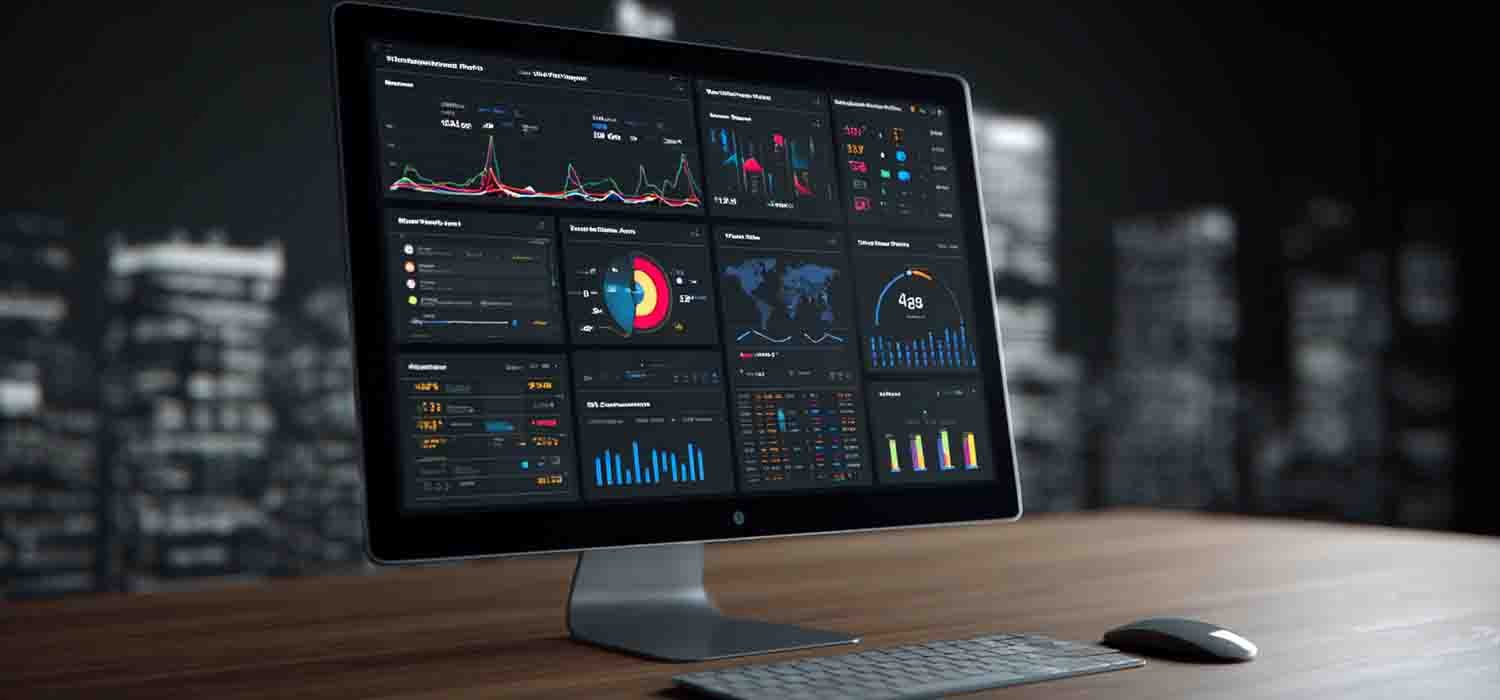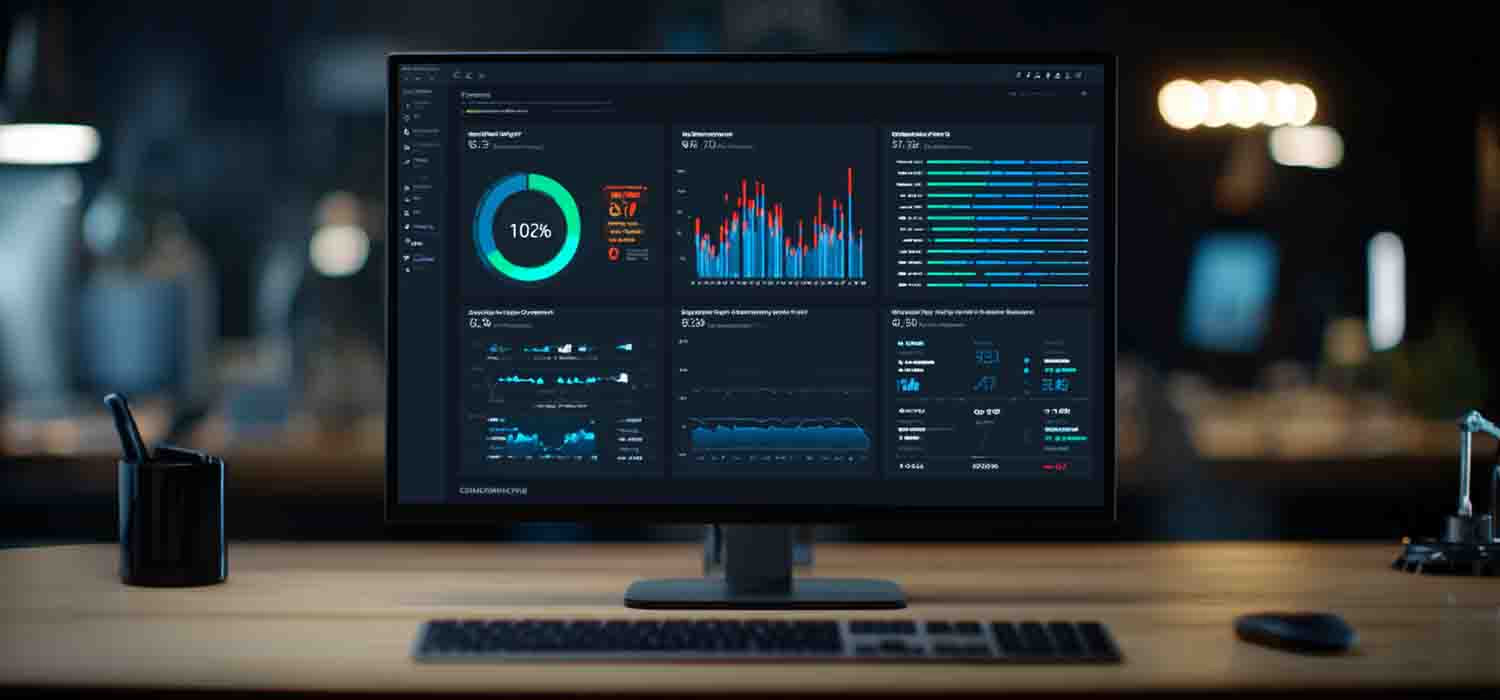July 11, 2025

IT system monitoring software is essential for keeping business operations running smoothly. Whether you're managing a few servers or a complex IT infrastructure, having the right tools in place helps you prevent downtime, track performance, and respond to issues quickly. In this blog, we’ll explore what IT system monitoring software does, how it supports IT infrastructure monitoring systems, and which features matter most. We’ll also compare popular tools like Nagios and Zabbix, and share tips for implementation and best practices. Topics like real-time alerts, dashboards, observability, and automation will also be covered.
IT system monitoring software helps businesses track the health, performance, and availability of their IT systems. It collects data from servers, applications, and networks, then analyzes it to detect problems or performance drops. This allows IT teams to respond quickly and avoid disruptions.
For growing businesses, this kind of software is more than just a nice-to-have—it’s a necessity. With the right monitoring solution, you can reduce downtime, improve uptime, and make smarter decisions about your infrastructure. It also supports compliance and security by keeping logs of system activity and alerting you to unusual behavior.

IT system monitoring software includes several key components that work together to provide full visibility into your IT environment.
Most platforms allow integration with existing monitoring tools. This helps businesses use what they already have while expanding capabilities. For example, combining tools can improve data collection and alert accuracy.
Mapping your infrastructure helps you understand how systems connect. This is useful when diagnosing issues or planning upgrades. Visual maps also help teams collaborate more effectively.
Many businesses still use Nagios or Nagios Core. Modern monitoring platforms often support plugins or integrations with Nagios, allowing you to extend its capabilities without starting from scratch.
Zabbix is another popular open-source tool. Some IT system monitoring software can import Zabbix configurations or metrics, making migration easier.
These features include tracking CPU usage, memory, disk space, and network traffic. They help identify bottlenecks and prevent overloads before they cause downtime.
Dashboards give you a visual overview of your systems. They often include charts, graphs, and alerts to help you spot trends or issues quickly.
Grafana is a powerful visualization tool often used with monitoring platforms. It helps turn raw data into clear, useful dashboards for better decision-making.
When evaluating IT system monitoring software, look for features that align with your business needs.

Visibility is about knowing what’s happening across your IT environment. Without it, you’re reacting to problems instead of preventing them. IT system monitoring software gives you that visibility by collecting and analyzing data from every part of your infrastructure.
This includes metrics like CPU usage, memory load, and network traffic. With this data, you can spot trends, plan upgrades, and avoid surprises. It also helps with compliance, as you can show a record of system activity when needed.
Enterprise-level monitoring platforms offer more than just basic tracking. They provide advanced features for large or complex environments.
Open-source IT monitoring tools like Icinga or Sensu offer flexibility and cost savings. They’re ideal for teams with technical expertise who want full control.
New Relic focuses on application monitoring and user experience. It’s useful for businesses that rely heavily on web apps or SaaS platforms.
Datadog is known for its wide range of integrations. It connects easily with cloud services, containers, and DevOps tools.
Prometheus is designed for collecting time-series data. It’s often used in Kubernetes environments and pairs well with Grafana.
Enterprise tools offer deep performance monitoring, including transaction tracing and service maps. This helps teams understand how systems interact.
Look for tools that support hybrid environments—on-premises, cloud, and containers. This ensures you’re covered no matter how your infrastructure evolves.
Monitoring applications is just as important as monitoring servers. Enterprise tools often include features like code-level tracing and error tracking.

Rolling out IT system monitoring software takes planning. Start by identifying what you need to monitor—servers, applications, networks, or all three. Then choose a platform that fits those needs and supports your existing tools.
Next, deploy the software in stages. Begin with critical systems and expand from there. Set up alerts, dashboards, and reports to make the most of your data. Finally, train your team so they know how to use the platform effectively.
Follow these tips to get the most from your IT system monitoring software:

Are you a business with 20 or more employees looking for IT system monitoring software that fits your growing needs? Our team understands the challenges of scaling IT infrastructure while maintaining visibility and uptime.
We help businesses choose and implement the right IT infrastructure monitoring system based on their size, goals, and existing tools. Whether you need help with setup, integration, or ongoing support, AlwaysOnIT is here to guide you every step of the way.
Small businesses often benefit from a monitoring solution that is easy to deploy and manage. Tools like PRTG or Spiceworks offer basic performance monitoring and alert features without needing a large IT team. These tools help track metrics like CPU usage, memory, and network traffic.
They also support log collection and dashboard creation, giving teams the visibility they need to act quickly. For more advanced needs, open-source platforms like Icinga or Zabbix can be customized to fit specific requirements.
Infrastructure monitoring helps detect problems early by tracking system health in real-time. This includes monitoring server loads, disk usage, and network performance. By catching issues before they escalate, businesses can avoid downtime and keep services running smoothly.
It also supports automation, allowing systems to respond to certain triggers automatically. For example, if a server reaches high CPU usage, the system can send an alert or restart a process to prevent failure.
Nagios is still widely used, especially in environments that value stability and customization. While it may lack some modern features, it supports plugins that extend its functionality. These plugins allow integration with cloud services, containers, and other tools.
However, for businesses using Kubernetes or DevOps pipelines, newer platforms may offer better scalability and observability. Still, Nagios remains a reliable choice for many traditional setups.
Yes, Zabbix can monitor cloud environments, though it may require additional configuration. It supports real-time data collection and alerting, making it useful for hybrid infrastructures. Zabbix also includes built-in templates for common cloud services.
Its visualization tools help teams understand how systems are performing. While it may not be as plug-and-play as some commercial tools, it offers strong flexibility for those with technical expertise.
An infrastructure monitoring tool helps businesses meet compliance requirements by collecting and storing logs, tracking access, and generating reports. These features are essential for audits and security reviews.
Monitoring platforms also support observability by showing how systems interact. This helps identify unusual behavior, detect breaches, and ensure that systems follow internal policies and external regulations.
Network monitoring focuses on the performance and availability of network devices like routers, switches, and firewalls. It tracks metrics like bandwidth usage, latency, and packet loss.
System monitoring, on the other hand, looks at servers and applications. It checks CPU load, memory usage, and application performance. Both are important for full visibility and should work together in a complete monitoring platform.